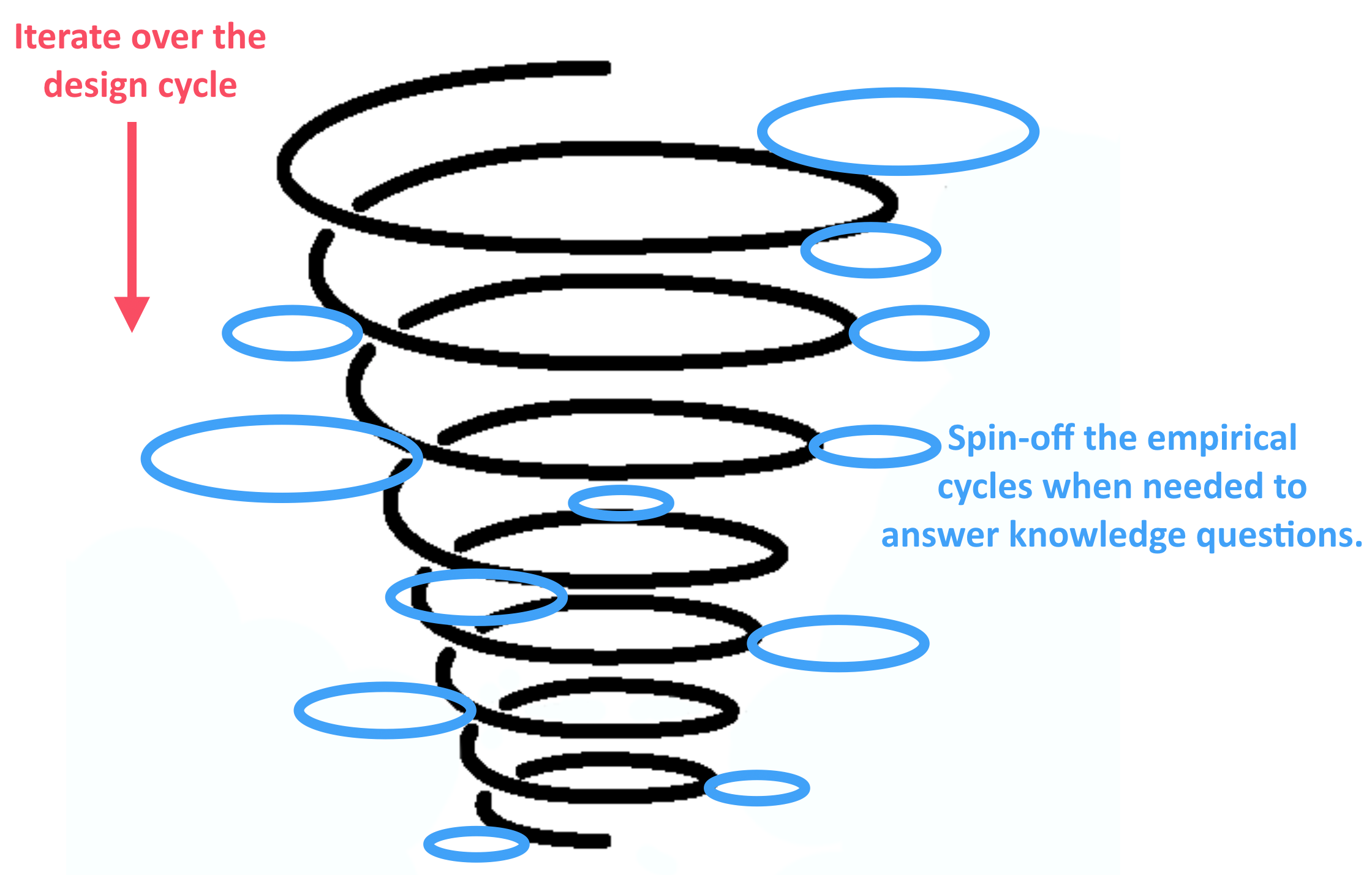Class Time
These notes are the backbone of the seminar with exercises and additional material. You are welcome to take a look and read ahead, but not all information is self-contained or complete.
These notes are the backbone of the seminar with exercises and additional material. You are welcome to take a look and read ahead, but not all information is self-contained or complete.
Step 1: (Individual) Come up with a good definition for what constitutes valuable knowledge:
Step 2: (In Team, on the whiteboard.) Discuss your solutions, and merge them together to an improved version that covers the most important aspects.
Conclusion: Make notes from the conclusion in class. What constitutes knowledge?
We have learned that a full evaluation is often not feasible. Instead, a validation tries to “justify that a treatment would contribute to stakeholder goals if implemented” and “The goal of validation is to predict how an artifact will interact with its context, without actually observing an implemented artifact in a real-world context.”
Usually, a validation is done in an lab or under lab conditions, i.e., is not realistic. Therefore the idea of scaling up is interesting.

The design cycle that we already covered in the preparation is used to solve design problems.
![The design cycle. Adapted from [@Wieringa:2014].](figures/design-cycle.png)
Analogously, there is a cycle to answer knowledge questions, and it is called the empirical cycle. Since its detailed content is highly dependent on your specific work area, we cannot cover it in detail here in this seminar.
![The empirical cycle. Adapted from [@Wieringa:2014].](figures/empirical-cycle.png)
The illustration below illustrates how design cycle and empirical cycle can fit together in a thesis: The spiral in the center are the iterations of the design cycle. They trigger knowledge questions, for instance to understand the problem context, answer questions about an artifact, or perform a validation. Whenever that happens, the design cycle triggers iterations of empirical cycles. (Don’t take this illustration too literally. It is an illustration, not a fixed instruction.)

Conclusion: What should a thesis cover, with regard to design cycles and empirical cycles?
With what you know by now, you should be able to outline the big picture of your thesis with regard to design science. The scheme on the next page should guide you through this process and stimulate important questions you should be aware of.
There are three areas in the scheme:
Social context: This describes a part of the world as it is, and consists of the stakeholders who want a specific problem solved, and who have specific goals. They may not know the problem and the goal, and it may be part of research to formulate them.
Research: This is the part of the project that you control. It consists of Design (the creation of artifacts) and their Investigation (answering knowledge questions about the design).
Knowledge context: This is the existing knowledge about the world, including existing designs. Your research will also result in new knowledge and new designs.
Instructions:
Think of your master thesis topic, and fill out the different fields (3 in Social Context, 3 in Knowledge Context, 4 in Your Research).
Iterate over all of them, fill in the ones you are most confident of first.
If you are stuck on one point, move to the next. Try rather to cover the entire diagram than to fine-tune individual points. Try to get the big picture right.
Critique from classmate:
What will I improve? What will I work on?
After the discussion - what is important?
This seminar is only the beginning of your work with your thesis. You got an introduction to some of the questions and taxonomy so that you are able to start asking the right questions and reading more on methodology. We propose the following steps forward:

Do all of this in collaboration with your supervisors, and show them your plan. They may have valuable input, but remember that planning for the thesis is your own responsibility.
There are two specific books that we recommend for further work.
Focus on the thesis on providing valuable knowledge, then design science will fit in as a tool for guiding you.
You need to think for yourself. Design science is a framework that provides you guidelines for how to ask relevant questions, but not how to answer them for your specific project. The answer how you should apply to your specific topic is an answer that only you can find.
Guidance on methods, experiments, validation and overall scope are valuable discussion subjects for you and your supervisor. Talk with your supervisor about these issues!
Read the chapters of the book on design science that are relevant for you.